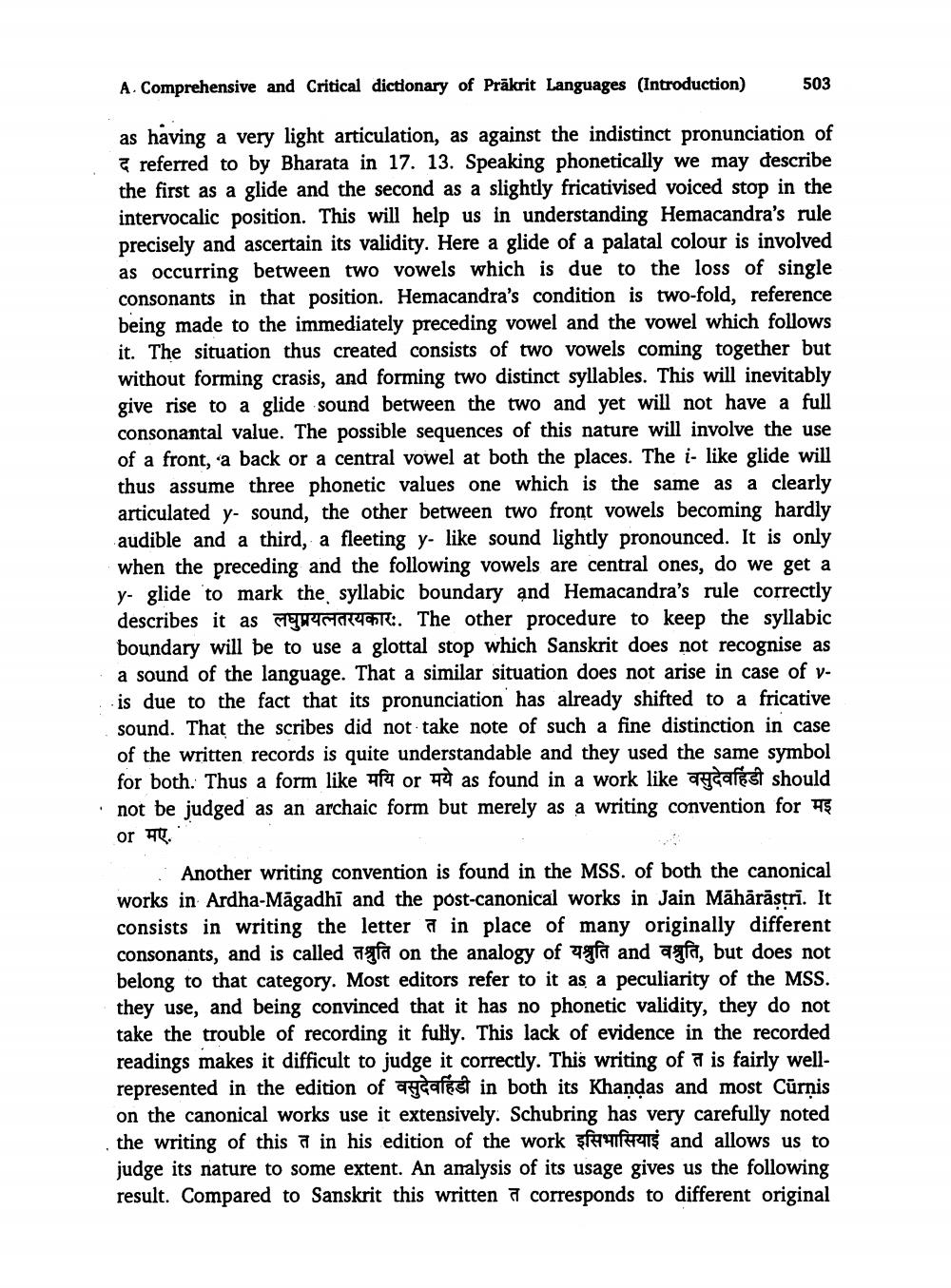________________
A. Comprehensive and Critical dictionary of Prākrit Languages (Introduction)
503
S05
as having a very light articulation, as against the indistinct pronunciation of & referred to by Bharata in 17. 13. Speaking phonetically we may describe the first as a glide and the second as a slightly fricativised voiced stop in the intervocalic position. This will help us in understanding Hemacandra's rule precisely and ascertain its validity. Here a glide of a palatal colour is involved as occurring between two vowels which is due to the loss of single consonants in that position. Hemacandra's condition is two-fold, reference being made to the immediately preceding vowel and the vowel which follows it. The situation thus created consists of two vowels coming together but without forming crasis, and forming two distinct syllables. This will inevitably give rise to a glide sound between the two and yet will not have a full consonantal value. The possible sequences of this nature will involve the use of a front, a back or a central vowel at both the places. The i- like glide will thus assume three phonetic values one which is the same as a clearly articulated y- sound, the other between two front vowels becoming hardly audible and a third, a fleeting y- like sound lightly pronounced. It is only when the preceding and the following vowels are central ones, do we get a y- glide to mark the syllabic boundary and Hemacandra's rule correctly describes it as writ:. The other procedure to keep the syllabic boundary will be to use a glottal stop which Sanskrit does not recognise as a sound of the language. That a similar situation does not arise in case of vis due to the fact that its pronunciation has already shifted to a fricative sound. That the scribes did not take note of such a fine distinction in case of the written records is quite understandable and they used the same symbol for both. Thus a form like afa or 44 as found in a work like a cafect should not be judged as an archaic form but merely as a writing convention for 4 or .
Another writing convention is found in the MSS. of both the canonical works in Ardha-Māgadhi and the post-canonical works in Jain Māhārāstri. It consists in writing the lettera in place of many originally different consonants, and is called asia on the analogy of Zafa and a fa, but does not belong to that category. Most editors refer to it as a peculiarity of the MSS. they use, and being convinced that it has no phonetic validity, they do not take the trouble of recording it fully. This lack of evidence in the recorded readings makes it difficult to judge it correctly. This writing of a is fairly wellrepresented in the edition of a cies in both its Khandas and most Cūrnis on the canonical works use it extensively: Schubring has very carefully noted the writing of this in his edition of the work sfa i s and allows us to judge its nature to some extent. An analysis of its usage gives us the following result. Compared to Sanskrit this written a corresponds to different original




